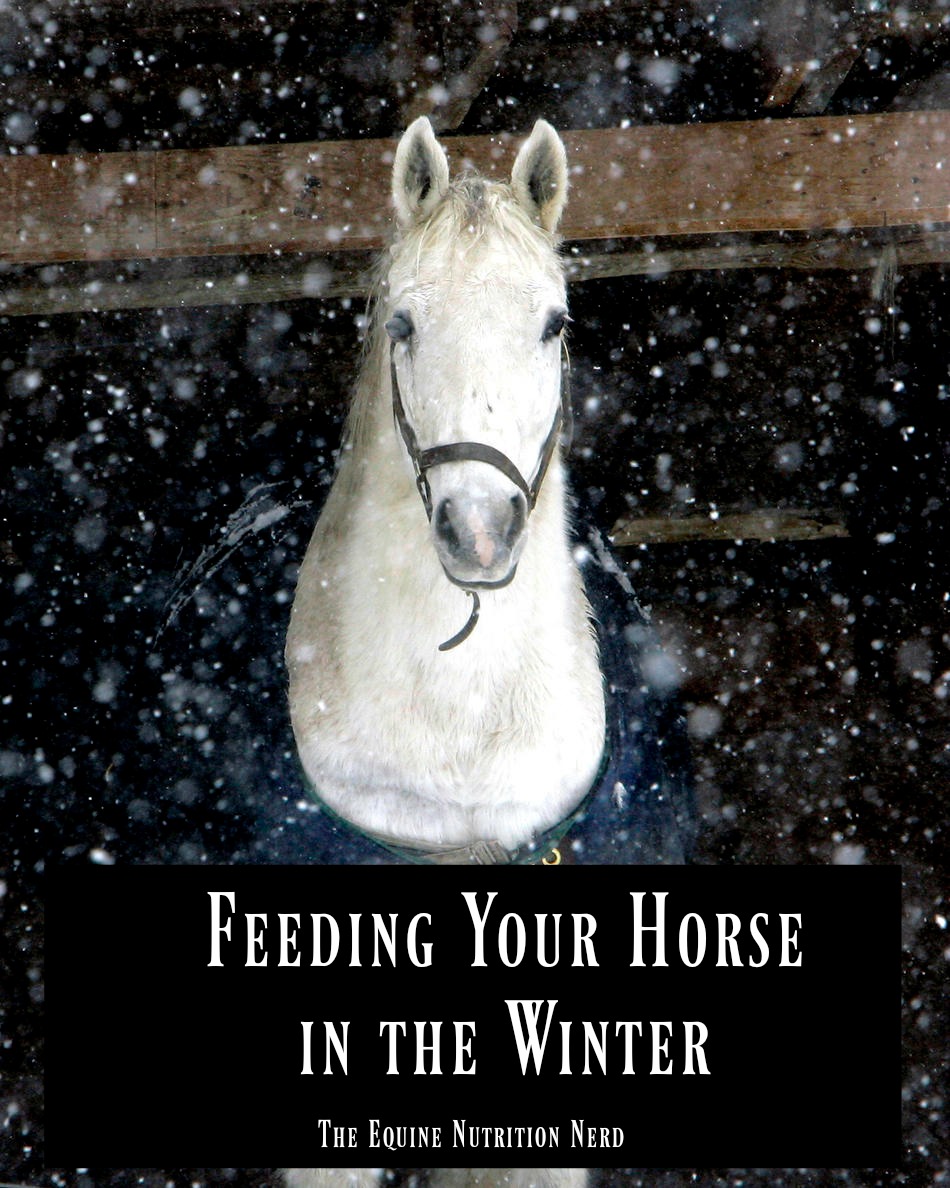
As temps dip down and the weather stays cold, a horse’s nutritional requirements change. It’s best to have a horse be a tad over weight (maybe a 6-7 BCS) entering the winter and with a thick hair coat and fat cover.
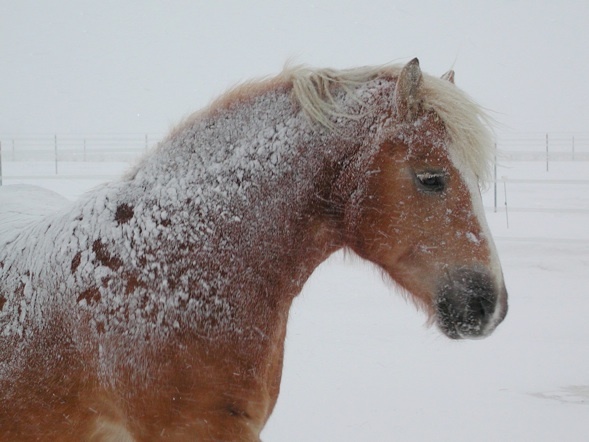
It has been estimated that a horse with a healthy winter coat, that can keep dry, will be comfortable at temperatures down to 18° F; and if the horse has access to a shelter it can tolerate temperatures as low as -40° F.
If you are lucky enough to be able to ride throughout the winter and clip your horse then understanding proper blanketing is a must!!
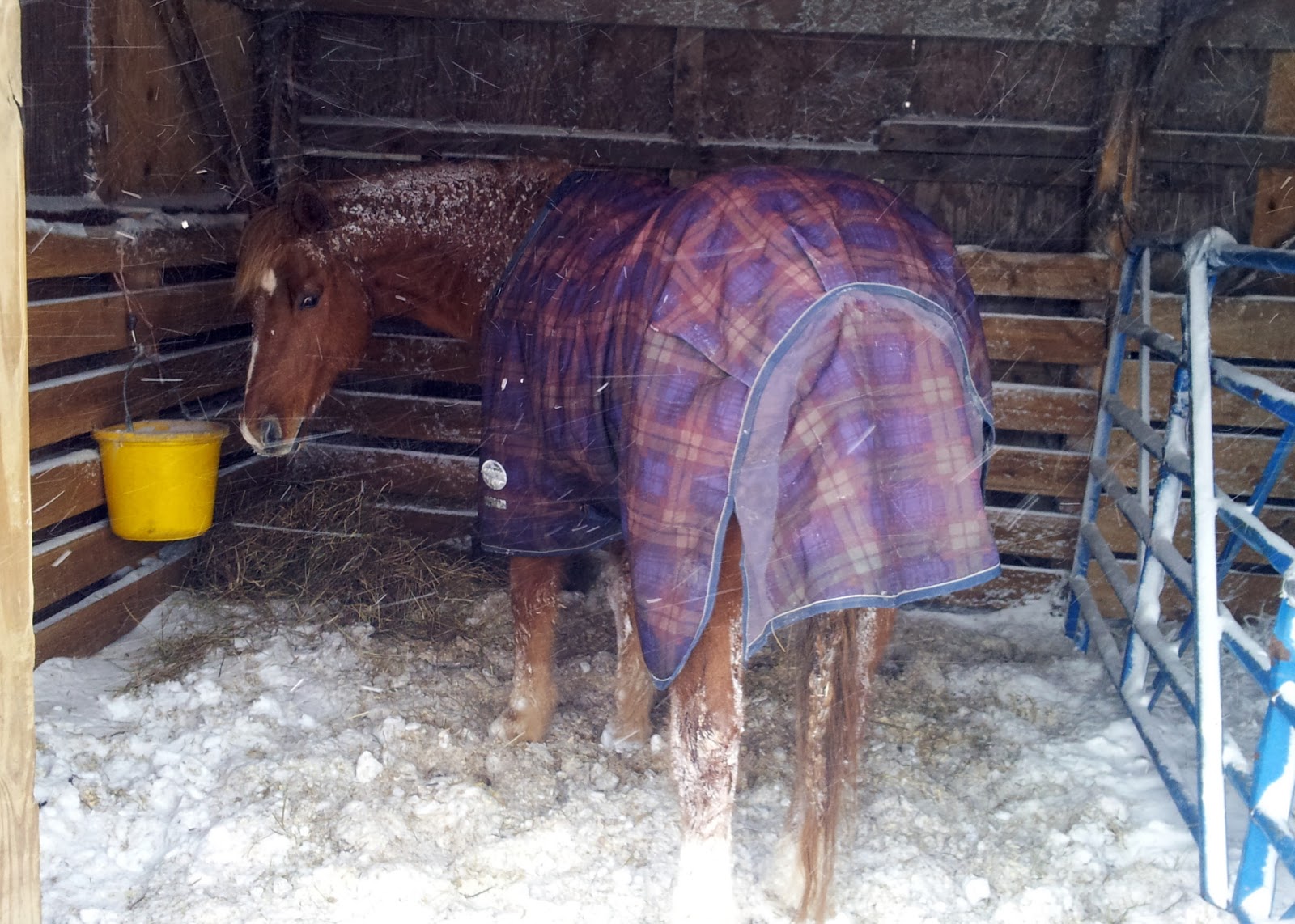
As winter’s temperatures drop a good rule of thumb to remember is for every degree below 18°F the horse requires an additional 1% energy in their diet. This might prompt you to ask, “what is the best source of additional dietary energy during the cold winter months?”
Good question! But first we must understand how horses utilize the dietary energy in the winter to keep warm. They do it in a couple of different ways. First, there is the heat given off as a by-product of normal metabolic processes. Secondly, there is the heat generated from microbial fermentation of forages that occurs in the hindgut during digestion.
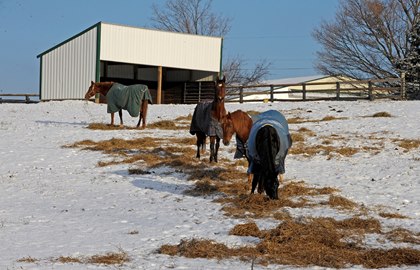
Some horse owners believe that feeding more concentrates (because they are energy dense), will help keep the horse warmer. But this isn’t how the horse was designed. We must remember that horses are designed to eat fiber/forage. Another reason to not focus on grain for heat is that there isn’t as much heat produced as a byproduct of digestion, absorption and utilization of grains as there is from the microbial fermentation of forages.
So, you should think about increasing the amount of forage in the diet NOT GRAIN to help meet the increasing energy needs resulting from winter weather. This will result in an increase in microbial fermentation which will help keep the horse warm.
Here’s an example, if a 1000 lb horse needed 16 lbs of good-quality hay each day when the temperature was 18° F, its requirement could be expected to increase by approximately 2 – 2.5 lbs to 18 -18.5 lbs if the temperature dropped to 0° F. Note: The increased dietary energy requirement would be even greater if the horse didn’t have access to shelter.
An additional very important point to consider is the need to provide access to clean, “warm” water. There was a study that determined that the most pleasing temperature of water for a horse is 45-65 degrees. So bucket warmers, and insulated troughs are great ideas to use in the winter. If the water is ice cold, the horse will not drink as much.
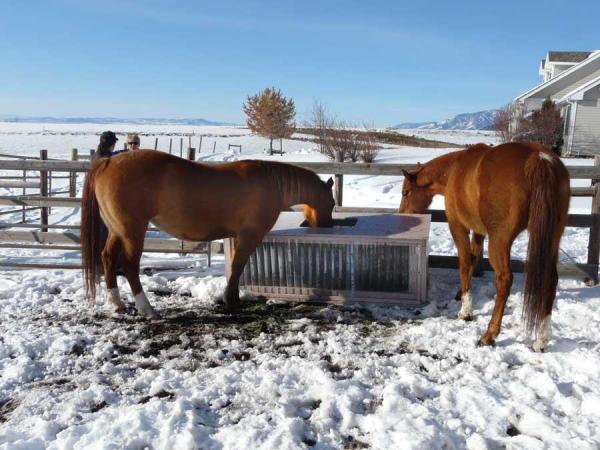
There are a few reasons beyond the obvious why good water intake is so important. A horse will require a lot more water when eating dried feedstuffs like hay, compared to horses grazing on lush pasture as pasture grass has water in it. In addition, horses usually move less in the winter due to lack of exercise and confinement. Movement aides in digestion and keeps things moving through the gut. Water also helps this process. The goal should always be to maximize water consumption to help prevent the possibility of dehydration and colic.

Winter adds an extra layer of concern for your horse’s health and nutrition needs. Simple rules such as increased forage and water intake will go a long way to help insure you both survive the coldest months!
Peace and good feed,


You must be logged in to post a comment.